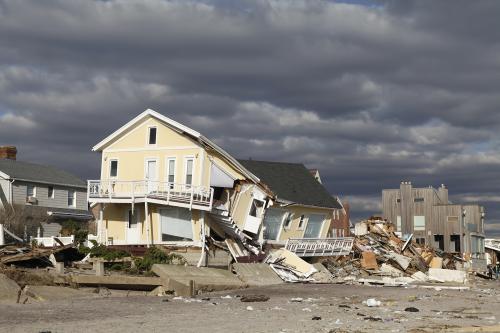Abstract
This paper uses the housing market to develop estimates of the local welfare impacts of Superfund sponsored clean-ups of hazardous waste sites. We show that if consumers value the clean-ups, then the hedonic model predicts that they will lead to increases in local housing prices and new home construction, as well as the migration of individuals that place a high value on environmental quality to the areas near the improved sites. We compare housing market outcomes in the areas surrounding the first 400 hazardous waste sites chosen for Superfund clean-ups to the areas surrounding the 290 sites that narrowly missed qualifying for these clean-ups. We find that Superfund clean-ups are associated with economically small and statistically indistinguishable from zero local changes in residential property values, property rental rates, housing supply, total population, and the types of individuals living near the sites. These findings are robust to a series of specification checks, including the application of a regression discontinuity design based on knowledge of the selection rule. Overall, the preferred estimates suggest that the local benefits of Superfund clean-ups are small and appear to be substantially lower than the $43 million mean cost of Superfund clean-ups.
Introduction
The estimation of individuals’ valuations of environmental amenities with revealed preference methods has been an active area of research for more than three decades. There are now theoretical models outlining revealed preference methods to recover economically well defined measures of willingness in a variety of settings, including housing markets, recreational choices, health outcomes, and the consumption of goods designed to protect individuals against adverse environmentally-induced outcomes (Freeman 2003 and Champ, Boyle, and Brown 2003 contain reviews). The application of these approaches, however, is often accompanied by seemingly valid concerns about misspecification that undermine the credibility of any findings. Consequently, many are skeptical that markets can be used to determine individuals’ valuations of environmental amenities.
Hazardous waste sites are an example of an environmental disamenity that provokes great public concern. The 1980 Comprehensive Environmental Response, Compensation, and Liability Act, which became known as Superfund, gave the Environmental Protection Agency (EPA) the right to place sites that pose an imminent and substantial danger to public welfare and the environment on the National Priorities List (NPL) and to initiate remedial clean-ups at those sites. Through 2005, approximately $35 billion (2005$) in federal monies and an unknown amount of private funding has been spent on Superfund clean-ups, and yet remediations are incomplete at roughly half of the nearly 1,600 sites. The combination of these high costs and the absence of convincing evidence of its benefits makes Superfund a controversial program (EPA 2005).
This paper uses the housing market to estimate the welfare consequences of Superfund sponsored clean-ups of hazardous waste sites. The empirical challenge is that the evolution of housing market outcomes (e.g., prices) proximate to the Superfund sites in the absence of the clean-ups is unknown. The development of a valid counterfactual is likely to be especially challenging, because the sites assigned to the NPL are the most polluted ones in the US. For example, what would have happened to housing prices in Love Canal, NY, in the absence of the famous Superfund clean-up there?



